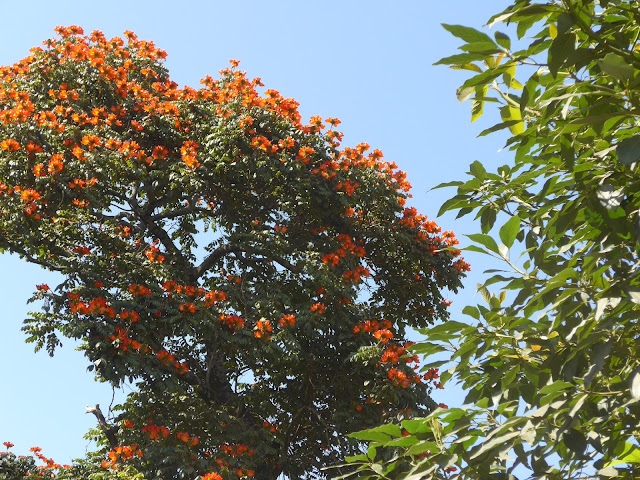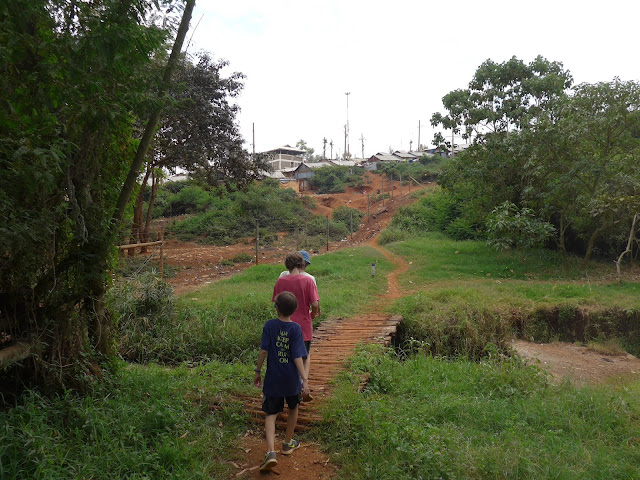 |
| Northwest of Nairobi is tea country - beautiful cool green hills |
 |
| Hiking up Mt Longonot |
 |
| Panorama from the rim of Longonot |
 |
| Mt Longonot is, as the boys say, a "mostly extinct" volcano. The last eruption was in 1860, so we felt pretty safe! The only evidence of activity was steam coming out of a vent at one location. |
 |
| Starting out along the rim; some of us did the full 7 km circuit around the rim. |
 |
| At the high point on the rim, great view out over the crater and the rift valley. |
 |
| Not an Africa native, but the Jacaranda trees have come into full bloom and are gorgeous. |
 |
| Flame trees are also in full bloom |
 |
| At the end of 2 weeks of Swahili lessons with our teacher Judith (second from left), and SALTers Kara and David. Judith was a very patient teacher, and a wealth of knowledge about Kenya in general. |
 |
| Fig tree roots at Karura, and our son taking the opportunity to climb something! |
 |
| Mau mau caves, supposedly a hideout during the Mau Mau rebellion. It happened to be the day that they inaugurated a British-funded memorial in Nairobi to the many detainees of the Mau Mau period. |
 |
| Narina Trogon, one of many exotic (to us!) birds found in Karura. |









No comments:
Post a Comment